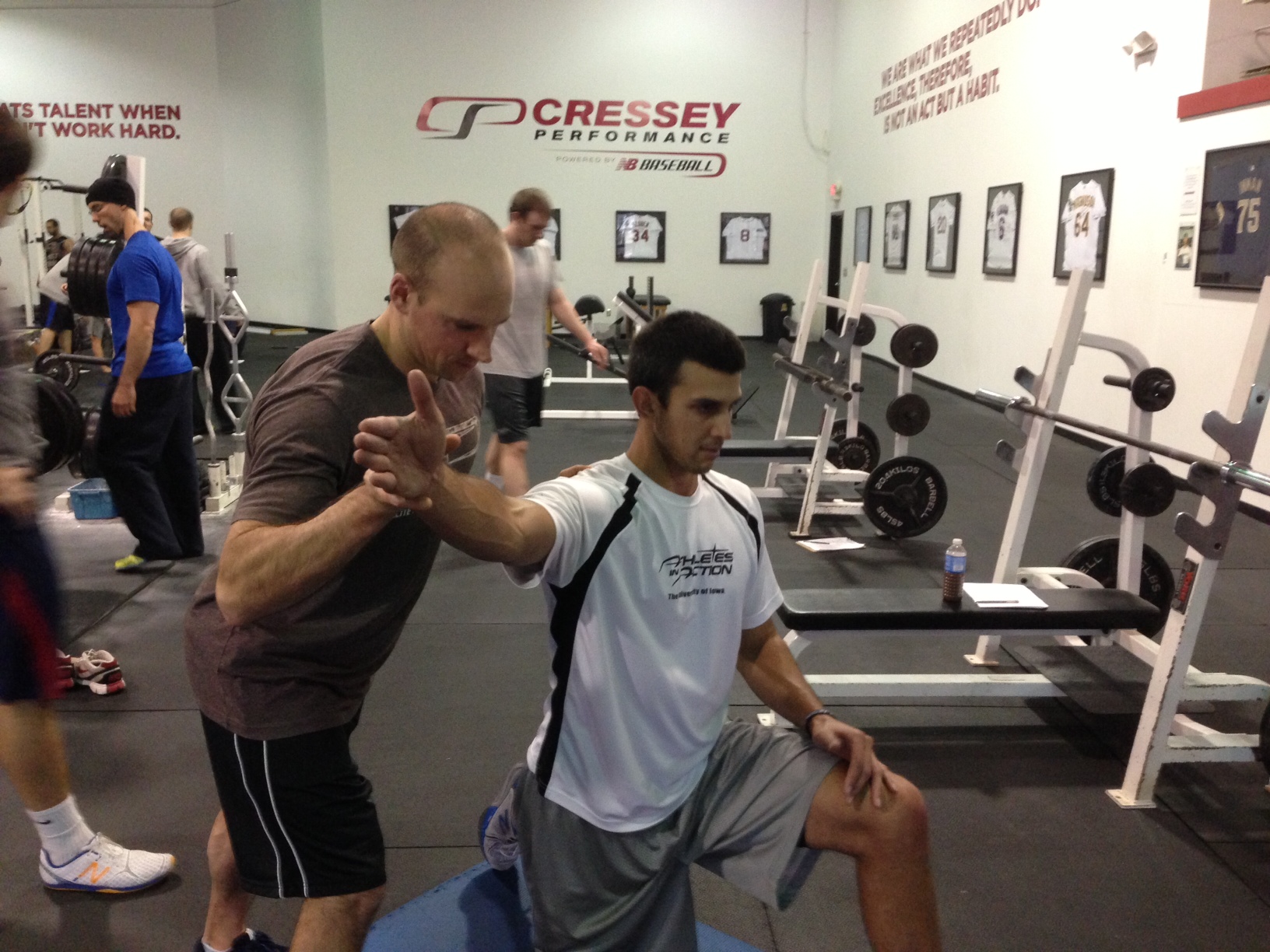Why the Overhead Angle Matters in the Pitching Delivery
Written on September 8, 2019 at 6:55 am, by Eric Cressey
The overhead view in a pitching delivery can enable you to see certain things that can’t be appreciated from other perspectives. Foremost among these is the ability to differentiate between thoracic rotation (upper back motion) and horizontal abduction (shoulder motion).
In this image taken just prior to stride foot contact, Gerrit Cole’s pelvis has already rotated counterclockwise toward the plate while his torso is still rotating clockwise. This is the hip-shoulder separation throwers seek for generating big time velocity.
However, when a thrower lacks thoracic rotation – or gives up thoracic rotation too early (usually by chasing arm speed too early in the delivery) – he’ll often resort to creating excessive horizontal abduction (arm back) to find the pre-stretch he wants to generate the velocity he covets. This is not only an ineffective velocity strategy, but it also can increase anterior shoulder and medial elbow stress – all while leading to arm side misses, accidental cutters, and backup breaking balls.
Over the past few years, I’ve heard of a few pitchers being advised to work to increase the horizontal abduction in their deliveries. I don’t think you can make this recommendation without the overhead view, and even then, it’s likely taking a distal (arm) solution to a proximal (trunk and timing) problem.
I covered hip-shoulder separation in the pitching delivery in great detail in a free presentation I gave away earlier this year when we launched our podcast. You can still get it by subscribing below:
|











